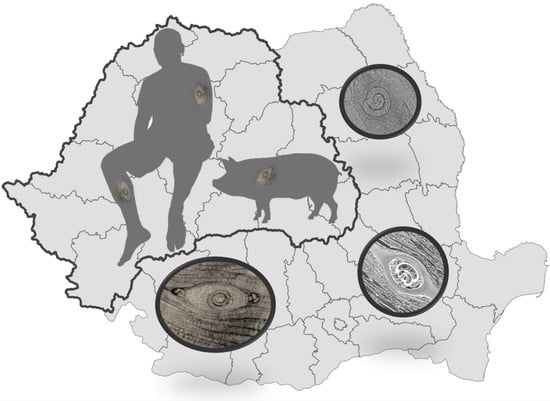Retrospective Survey of Human Trichinellosis in a Romanian Infectious Diseases Hospital over a Thirty-Year Interval—The Never-Ending Story
Abstract
Share and Cite
Lupșe, M.; Ionică, A.M.; Flonta, M.; Rus, M.A.; Briciu, V. Retrospective Survey of Human Trichinellosis in a Romanian Infectious Diseases Hospital over a Thirty-Year Interval—The Never-Ending Story. Pathogens 2023, 12, 369. https://doi.org/10.3390/pathogens12030369
Lupșe M, Ionică AM, Flonta M, Rus MA, Briciu V. Retrospective Survey of Human Trichinellosis in a Romanian Infectious Diseases Hospital over a Thirty-Year Interval—The Never-Ending Story. Pathogens. 2023; 12(3):369. https://doi.org/10.3390/pathogens12030369
Chicago/Turabian StyleLupșe, Mihaela, Angela Monica Ionică, Mirela Flonta, Mihai Aronel Rus, and Violeta Briciu. 2023. "Retrospective Survey of Human Trichinellosis in a Romanian Infectious Diseases Hospital over a Thirty-Year Interval—The Never-Ending Story" Pathogens 12, no. 3: 369. https://doi.org/10.3390/pathogens12030369
APA StyleLupșe, M., Ionică, A. M., Flonta, M., Rus, M. A., & Briciu, V. (2023). Retrospective Survey of Human Trichinellosis in a Romanian Infectious Diseases Hospital over a Thirty-Year Interval—The Never-Ending Story. Pathogens, 12(3), 369. https://doi.org/10.3390/pathogens12030369






